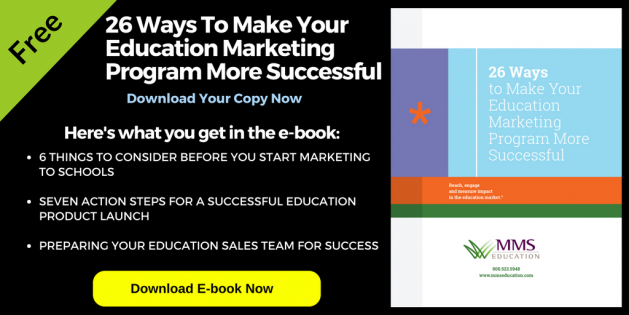In the education industry, countless products, programs, and services vie for attention. This variety of options benefits both educators and students alike. But as a company providing those products and programs, it can be hard to break through the noise of your competitors to rise to the top. An important tool for achieving success in this space, though, is a competitive scan, which allows you to evaluate your competitors and identify your strengths and weaknesses in relation to them.
If you’re new to the education market or have been in the industry for a while but haven’t taken a close look at your competitors recently, consider taking a deep dive into their offerings to see how you compare. Use these six tips as a guide to evaluating your competitors and utilizing your findings for success.
Compare the specifics
Do your research. Dive into the specifics of your competitor’s products and programs. What grade levels do they cover? What subject matter? What comes in a kit? It’s important to know whether your competitor’s products cover grades K–8, but yours are only intended for grades 5–8. Or, whether your kit includes supplemental materials, but theirs doesn’t. You can use this information to distinguish your product or program from theirs.
Evaluate the cost
Know the numbers. Maybe you’re offering your product or program at a similar cost, or maybe there is a big gap. Maybe your program is free but theirs isn’t. However your product or program compares, it’s important to know so that you can convince educators why they should pay more for your product or why your program is better, even though it’s cheaper. And, think your program will be more attractive because it’s free? You’re still competing for an educator’s time, so it’s important to know how your competitors compare.
Review the support offered
Offer tangible help. Educators like knowing there is someone to reach out to if they have questions. This can often be a key selling point. If you offer help desk support and your competitor doesn’t, this is a key differentiator. If you don’t currently offer help desk support, consider doing so.
Check out their social game
Are your competitors on Facebook? Twitter? Pinterest? If they are and you aren’t, then maybe you should be too. Or, maybe you should adjust your social media strategy to be more competitive with what they’re doing. On the other hand, if they’re on social media and it doesn’t appear to be doing much for them, that could inform your strategy as well.
Technical requirements
Do your competitors have specific technological requirements of a school or district for their product to be implemented? This could be a key area to distinguish yourself. Maybe your product works on systems theirs doesn’t or maybe you have an app and they don’t. Knowing what your competitors require will help you to share the benefits of your product or program to your prospective audience.
Partners and funding
It’s important to take a look at who your competitors are partnering with and where they are getting their funding from. Maybe they’ve managed to align themselves with a large nonprofit specific to your program’s focus. Or maybe they received funding from a grant you were looking into yourself. Knowing who your competitors are involved with may help you determine the path you take with the partners and funders you’d like to collaborate with.
Need assistance learning more about your competitors and developing your competitive advantage? MMS Education can help!

